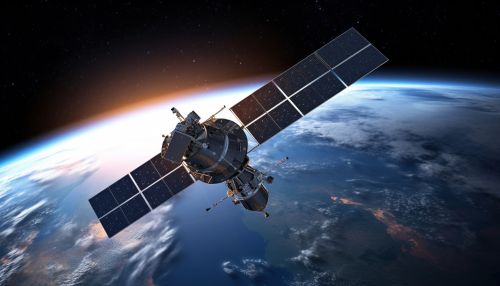Geosynchronous Orbit
Introduction
A geosynchronous orbit (GEO) is a type of high Earth orbit that directly matches the Earth's sidereal rotation period. This means that a satellite in GEO remains in the same position in the sky as viewed from a fixed location on Earth, making it a very useful orbit for communications, weather observation, and other stationary services.
Physics of Geosynchronous Orbit
The physics of a geosynchronous orbit involves complex interactions between the gravitational forces of the Earth, the centrifugal force acting on the satellite, and the satellite's velocity. The balance of these forces allows the satellite to maintain a stable orbit at a constant distance from the Earth's surface.


The altitude of a geosynchronous orbit is approximately 35,786 kilometers above the Earth's equator. At this altitude, the orbital period (the time it takes for the satellite to complete one full orbit) is equal to the Earth's sidereal rotation period, which is approximately 23 hours, 56 minutes, and 4 seconds.
The velocity of a satellite in GEO is approximately 3.07 kilometers per second. This velocity is the result of the balance between the gravitational force pulling the satellite towards the Earth and the centrifugal force pushing it away.
Types of Geosynchronous Orbits
There are several types of geosynchronous orbits, each with its own specific characteristics and uses.
Geostationary Orbit
A geostationary orbit (GSO) is a special type of geosynchronous orbit where the satellite is not only synchronized with the Earth's rotation but also remains stationary with respect to a point on the Earth's equator. This is achieved by placing the satellite in an orbit that is both geosynchronous and has zero inclination, meaning it orbits exactly above the equator.
Supersynchronous Orbit
A supersynchronous orbit is a type of geosynchronous orbit where the satellite's orbital period is longer than the Earth's sidereal day. This is achieved by placing the satellite at an altitude higher than the geosynchronous altitude. Supersynchronous orbits are often used for satellites that are being transferred to geostationary orbit.
Subsynchronous Orbit
A subsynchronous orbit is a type of geosynchronous orbit where the satellite's orbital period is shorter than the Earth's sidereal day. This is achieved by placing the satellite at an altitude lower than the geosynchronous altitude. Subsynchronous orbits are less common than geostationary or supersynchronous orbits.
Applications of Geosynchronous Orbits
Geosynchronous orbits have a wide range of applications, primarily in the fields of communications, weather observation, and navigation.
Communications
The majority of communication satellites are placed in geostationary orbit. This is because a satellite in GSO can provide continuous coverage to a specific area of the Earth's surface, making it ideal for broadcasting and telecommunications services.
Weather Observation
Weather satellites are often placed in geostationary orbit. From this vantage point, they can continuously monitor the same area of the Earth's surface, providing real-time weather data and helping to track the development of weather systems.
Some navigation satellites, such as those in the Global Positioning System (GPS), use geosynchronous orbits. These satellites provide precise timing and positioning information that can be used for a wide range of applications, from navigation and surveying to timekeeping and scientific research.
Challenges and Limitations
While geosynchronous orbits offer many advantages, they also present several challenges and limitations.
One of the main challenges is the high cost of launching a satellite to GEO. The high altitude of geosynchronous orbit means that a significant amount of energy is required to reach it, making launches to GEO more expensive than to lower orbits.
Another challenge is the limited number of suitable launch sites. Because a geostationary orbit requires zero inclination, the satellite must be launched from a location near the equator.
In terms of limitations, one of the main issues is the geostationary belt's limited capacity. The geostationary belt is the narrow band of space where satellites can be placed in geostationary orbit. This belt can only accommodate a limited number of satellites, and it is becoming increasingly crowded.
